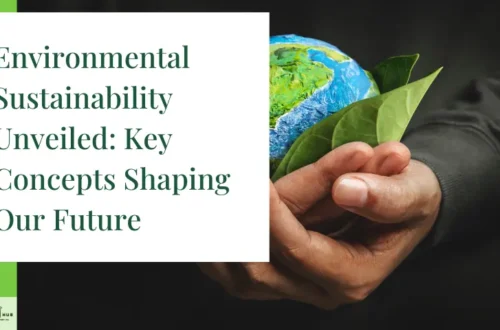Game-Changing Eco Friendly Home Activities: Transform Your Life and Save the Planet

Ever wondered how your daily habits affect the planet? It’s time to take a closer look at our carbon footprint and its environmental impact.
Climate change is knocking at our doors, and our homes are major contributors to greenhouse gas emissions. From leaving lights on to excessive water use, every action counts.
Did you know? The average American household emits about 48 tons of carbon dioxide annually. That’s like driving a car non-stop for 6 years!
But here’s the good news: small changes at home can make a big difference. By tweaking our routines, we can reduce our impact and help combat climate change.
Think about it. Every time you switch off a light or choose a reusable bag, you’re taking a step towards a greener future.
Ready to make a change? Let’s explore how we can transform our homes into eco-conscious sanctuaries.
Our daily home activities significantly contribute to climate change, but small, mindful changes can greatly reduce our environmental impact.
The Power of Small Changes in Daily Routines
Ever heard the saying “big things have small beginnings”? That’s exactly how eco-friendly lifestyles start – with small changes in our daily routines.
Imagine if everyone in your neighborhood started using reusable bags. That’s thousands of plastic bags saved from landfills each week!
These positive impacts add up quickly. Switching off lights when leaving a room, using a refillable water bottle, or taking shorter showers – they all count.
The best part? These changes are easy to implement and often save you money too. It’s a win-win for you and the planet!
So, are you ready to embark on this eco-friendly journey? Let’s dive into some game-changing activities you can start right at home.
Small, consistent changes in daily routines can lead to significant positive impacts on the environment and often result in personal benefits as well.
RELATED: Be Eco Friendly in 2024: Practical Tips for a Greener Home
Energy Conservation at Home
Let’s talk about energy consumption. Did you know that the average American home uses about 11,000 kilowatt-hours of electricity each year? That’s a lot of power!
But don’t worry, there are plenty of ways to use less energy and even tap into renewable energy sources. It’s all about developing energy-saving habits.
Maximizing Natural Light and Reducing Electricity Usage
Ever thought about how much energy you could save by simply opening your curtains? Natural light is free and abundant!
Here are some easy steps:
– Open blinds and curtains during the day
– Use task lighting instead of overhead lights
– Switch to LED bulbs (they use 75% less energy!)
Remember, every time you flip off a switch, you’re helping the planet.
Embracing Energy-Efficient Appliances
Your home appliances could be energy vampires! But there’s a simple solution: energy-efficient models.
Consider this:
– A new ENERGY STAR certified washing machine uses 25% less energy
– Using cold water for laundry can save up to 90% of the energy used to wash clothes
Pro tip: Always run full loads in your dishwasher and washing machine. It’s the best way to maximize efficiency!
Conserving energy at home through simple habits and energy-efficient appliances can significantly reduce your carbon footprint and energy bills.
RELATED: Understanding Eco Friendly and Environmentally Friendly
Water Conservation Techniques
Water scarcity is a growing concern globally. But did you know that the average American family uses more than 300 gallons of water per day at home?
The good news? There are easy steps we can take to reduce our water usage dramatically.
Identifying and Fixing Leaks
A dripping faucet might seem harmless, but it can waste up to 3,000 gallons per year! That’s enough to fill a swimming pool.
Here’s a simple action you can take:
1. Check all faucets and pipes for leaks
2. Replace worn-out washers or valve seats
3. Consider installing water-saving fixtures
Remember, fixing leaks is not just about saving water, it’s about saving money too!
Smart Water Usage in Daily Activities
Ever thought about how much water you use while brushing your teeth? Small changes can make a big difference.
Try these effective ways to save water:
– Turn off the tap while brushing teeth or shaving
– Take shorter showers (aim for 5 minutes!)
– Use a bucket to collect water while waiting for the shower to heat up
These simple actions can save thousands of gallons of water each year.
Water conservation at home, through fixing leaks and smart usage in daily activities, can significantly reduce water waste and combat water scarcity.
Waste Reduction and Management
Did you know that the average American generates about 4.9 pounds of waste per day? That’s a lot of trash! But don’t worry, there are plenty of ways to reduce this.
Let’s start with food waste. About 40% of food in the US goes uneaten. Imagine the resources we could save by being more mindful!
And what about those pesky plastic bottles and bags? They’re major environmental villains. A single plastic bag can take up to 1,000 years to decompose!
Creating a Home Recycling System
Setting up a recycling system at home is easier than you think. It’s all about organization and consistency.
Try this:
1. Set up separate bins for different recyclables
2. Learn what can and can’t be recycled in your area
3. Rinse containers before recycling
Remember, recycling one aluminum can saves enough energy to run a TV for three hours!
Composting: Turning Waste into Resource
Composting is like magic – it turns your food scraps into nutrient-rich soil. Plus, it’s a great way to reduce methane emissions from landfills.
Here’s a simple guide to start composting:
1. Choose a dry, shady spot for your compost bin
2. Add a mix of ‘greens’ (food scraps) and ‘browns’ (dry leaves, paper)
3. Keep it moist and turn regularly
Pro tip: Composting is perfect for growing nutritious plant-based alternatives in your garden!
Effective waste management through recycling and composting can significantly reduce landfill waste and create valuable resources for gardening.
Sustainable Gardening Practices
Ever thought about turning your backyard into a mini carbon dioxide-absorbing machine? That’s exactly what sustainable gardening does!
Gardening isn’t just a hobby; it’s a powerful tool in our eco-friendly arsenal. Plants absorb CO2, release oxygen, and can even provide you with fresh, organic produce.
Indoor and Vertical Gardening Options
Don’t have a big yard? No problem! Indoor and vertical gardening are perfect solutions for small spaces.
Try these ideas:
– Grow herbs in your kitchen window
– Create a vertical garden on a sunny wall
– Use hanging baskets for trailing plants
Did you know? A small indoor garden can remove up to 87% of air toxins in 24 hours!
Growing Your Own Herbs and Vegetables
Nothing beats the taste of home-grown produce. Plus, you’re reducing food miles and supporting local farmers – yourself!
Start with easy-to-grow options:
1. Tomatoes
2. Lettuce
3. Basil
4. Peppers
Remember, even a small herb garden can make a big difference in reducing your carbon footprint.
Sustainable gardening, whether indoors or outdoors, not only provides fresh produce but also helps absorb CO2 and improve air quality.
Eco-Friendly DIY Projects
Ready for some hands-on experience? DIY projects are not just fun, they’re a great way to reduce waste and get creative!
From turning old jars into planters to making your own eco-friendly cleaning products, the possibilities are endless.
Upcycling and Repurposing Old Items
Before you toss something in the trash, ask yourself: “Could this be used in a different way?”
Here are some ideas to get you started:
– Turn an old ladder into a bookshelf
– Use wine corks to make a bulletin board
– Create a bird feeder from a milk carton
Pro tip: Check out yard sales for items you can upcycle. It’s a treasure trove of possibilities!
Remember, upcycling isn’t just about saving money. It’s about giving new life to old items and reducing waste.
Eco-friendly DIY projects and upcycling can significantly reduce waste while allowing for creative expression and resourcefulness.
Adopting a Plant-Based Diet
Did you know that animal agriculture is responsible for about 14.5% of global greenhouse gas emissions? That’s more than the entire transportation sector!
Adopting a plant-based diet, even part-time, can make a huge difference. It’s not just good for the planet, but for your health too.
Here are some easy ways to start:
1. Try “Meatless Mondays”
2. Experiment with plant-based milk alternatives
3. Explore international cuisines that are naturally plant-based
Remember, you don’t have to go vegan overnight. Every plant-based meal counts!
Pro tip: Start with familiar foods. Love burgers? Try a black bean burger. Pasta fan? There are tons of delicious veggie-based sauces!
Adopting a plant-based diet, even partially, can significantly reduce your carbon footprint while offering numerous health benefits.
Sustainable Transportation Choices
Ever calculated your own carbon footprint from transportation? It might surprise you!
The average car emits about 4.6 metric tons of carbon dioxide per year. That’s like filling up 4 Olympic-sized swimming pools with CO2!
But don’t worry, there are plenty of eco-friendly alternatives:
– Biking or walking for short trips
– Using public transit for longer journeys
– Carpooling with colleagues or friends
Did you know? If you bike 10 miles instead of driving, you’ll save about 5 pounds of carbon dioxide emissions!
Remember, every mile not driven in a car is a win for the environment. Plus, you might discover new parts of your neighborhood or make new friends on public transit!
Opting for sustainable transportation methods like biking, walking, or public transit can significantly reduce your personal carbon footprint.
Eco-Conscious Shopping Habits
Shopping might seem harmless, but our choices have a big impact on the environment. The good news? Becoming an eco-conscious shopper is easier than you think!
Start with these simple steps:
1. Bring your own reusable shopping bags
2. Choose products with minimal packaging
3. Buy in bulk to reduce packaging waste
4. Opt for secondhand items when possible
Did you know? Using a reusable water bottle can save an average of 156 plastic bottles annually per person!
Supporting Sustainable and Local Businesses
Shopping local isn’t just trendy, it’s eco-friendly too! Local businesses often have a smaller carbon footprint and support the local economy.
Here’s how to shop sustainably:
– Visit farmers markets for fresh, local produce
– Check out local craft fairs for unique, handmade items
– Look for businesses that use sustainable practices
Remember, every dollar you spend is a vote for the kind of world you want to live in.
Adopting eco-conscious shopping habits and supporting sustainable local businesses can significantly reduce waste and support environmentally friendly practices.
Raising Environmental Awareness
Environmental issues are a growing concern, but change starts with awareness. You can be a powerful force for good by sharing your knowledge!
Here are some ways to spread the word:
– Share eco-friendly tips on social media
– Start conversations about sustainability with friends and family
– Participate in local environmental initiatives
Remember, every person you inspire multiplies your positive impact!
Educating Family and Community
Want to make a bigger difference? Start with your inner circle!
Try these fun ideas:
– Host a movie night featuring environmental documentaries
– Organize a neighborhood clean-up day
– Create environmental education games for kids
Did you know? Games can be a powerful tool for learning. Why not create a quiz about recycling or a scavenger hunt for eco-friendly items around the house?
Raising environmental awareness through education and community involvement can create a ripple effect of positive change.
Leveraging Technology for Eco-Friendly Living
In this digital age, technology can be a powerful ally in our eco-friendly journey. From mobile apps that track your carbon footprint to smart home devices that optimize energy use, tech can make green living easier and more fun!
Here are some tech-savvy eco-tips:
– Use a smart thermostat to reduce energy waste
– Try apps that help you find local, sustainable products
– Join online communities focused on sustainable living
Remember, while technology can help, it’s important to use it mindfully to avoid unnecessary energy consumption.
Environmental Education Through Games
Who said learning about the environment can’t be fun? Many well-designed games are teaching players about sustainability in engaging ways.
For example:
– “Eco” is a multiplayer survival-oriented game where players must build a civilization while managing resources sustainably
– “Plasticity” is an indie game that explores a world overrun by plastic waste
These games offer immersive learning opportunities about real scientific phenomena and environmental challenges.
Technology and games can be powerful tools for promoting eco-friendly living and environmental education in an engaging and accessible way.
Celebrating Earth Day Every Day
Earth Day (April 22nd) is great, but why limit our eco-efforts to just one day? Let’s make every day Earth Day!
Here are different ways to celebrate our planet year-round:
– Plant a tree on your birthday
– Have a monthly family ‘green challenge’
– Volunteer for local environmental organizations
Remember, small actions repeated daily have a bigger impact than grand gestures once a year.
Pro tip: Create a calendar of eco-activities for the year. It could be as simple as “Meatless Mondays” or “No-Waste Weekends”.
Incorporating Earth Day principles into daily life through regular eco-friendly activities can lead to more significant and lasting environmental impact.
Innovative Solutions for a Sustainable Future
In recent years, we’ve seen some game-changing ideas emerge in the fight against climate change. From lab-grown meat to plastic-eating bacteria, innovation is giving us hope for a greener future.
But innovation isn’t just for scientists and big companies. You can be an eco-innovator too!
Here are some ideas to get you started:
– Create a neighborhood tool-sharing program to reduce consumption
– Start a community composting initiative
– Design a rainwater harvesting system for your home
Remember, some of the best eco-solutions come from everyday people noticing a problem and finding a creative fix.
Did you know? A group of students invented a bioplastic made from banana peels. Talk about a fruitful idea!
The key is to keep learning, experimenting, and sharing your ideas. Who knows? Your eco-innovation could be the next big thing in sustainable living!
Innovative solutions, both large-scale and grassroots, play a crucial role in creating a sustainable future, and everyone has the potential to contribute their ideas.
RELATED: Essential Traits of an Environmentally Conscious Individual: Transform Your Impact Today!
Conclusion
As we wrap up our journey through these game-changing eco friendly home activities, it’s clear that each of us has the power to make a significant impact on our planet. By incorporating these sustainable practices into our daily routines, we not only reduce our carbon footprint but also create a ripple effect of positive change in our communities.
Remember, every small step counts – from conserving energy and water to embracing plant-based diets and supporting local farmers. These actions collectively contribute to a healthier environment and a more sustainable future. As you implement these eco-friendly activities, you’ll likely discover that they not only benefit the planet but also enhance your quality of life and potentially save you money in the long run.
Let’s commit to making every day Earth Day by continuously seeking new ways to live more sustainably. Whether it’s through innovative DIY projects, leveraging technology, or simply being more mindful of our consumption habits, we all have a role to play in protecting our precious planet. Together, we can create a greener, cleaner, and more vibrant world for generations to come.
![Unlocking the Future: 6 Sustainable Energy Sources Revolutionizing Our World [Expert Guide]](https://greenifyhub.com/wp-content/uploads/2024/08/Unlocking-the-Future-6-Sustainable-Energy-Sources-Revolutionizing-Our-World-Expert-Guide-75x75.webp)




